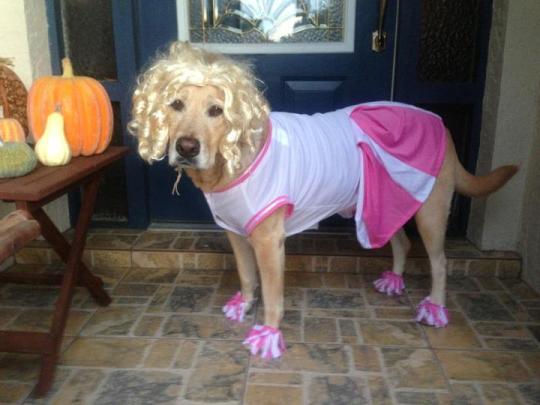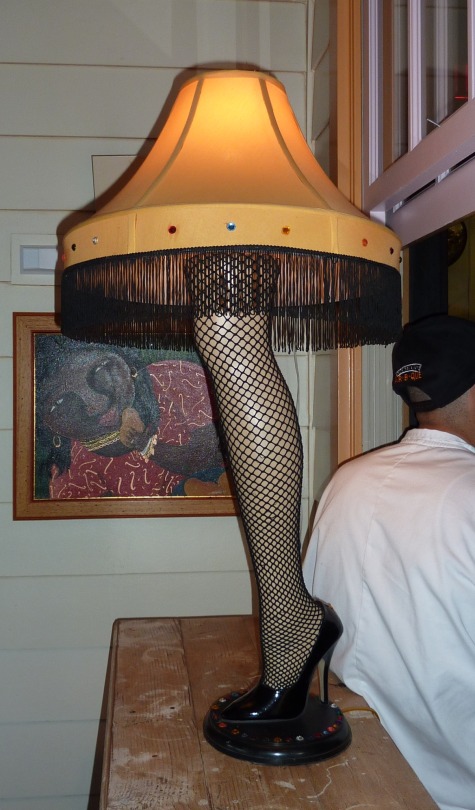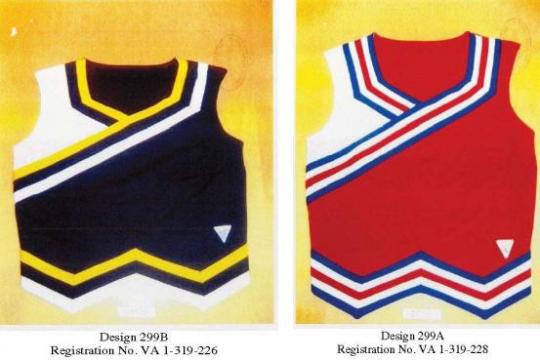
photo courtesy petful
(This post originally appeared on the Shapeways blog)
A: Copyright law, of course.
There is a new legal decision by the Sixth Circuit Court of Appeals in the United States that brings together cheerleading uniforms and 3D printing. It isn’t a game changer – the decision doesn’t fundamentally rewrite legal rules – but it does shed some light on what is likely to be one of the thorniest issues around 3D printing and intellectual property law: a copyright concept known as severability. The question addressed by the court was seemingly straightforward: are the decorations on cheerleading uniforms a critical part of their functionality? The way the court found an answer to that question will help us understand what types of 3D printed things are – and are not – protected by copyright.
I clicked on the link but now am thinking I don’t want to read all of this: what’s the short version?
Severability is the test that US courts use to figure out which parts of things that are both functional and decorative can be protected by copyright (if any). There is now a new test to determine this in part of the United States. The test itself (arguably the tenth test currently being used) doesn’t bring a lot more clarity to the issue, but is an excuse to walk through how all of this works. Most of this blog post just explains how the court applied the test in this one case.
Still with me? Let’s go!
Background Point 1: Useful vs. Creative
As explained in the Introduction to Rights and Protections post, there is something of a divide between objects that are eligible for copyright protection and objects that are eligible for patent protection. Creative objects can get copyright protection while functional objects can get patent protection. In theory these two categories are mutually exclusive. In practice, some objects can be a little bit of both. Courts use “severability” to try and determine if the mixed elements of a single object can be separated out and protected individually.
Oh, and as a general matter clothing and uniforms are considered a functional object – they keep you warm and not naked.
Background Point 2: Severability

While a lamp is a useful article, the leg sculpture that forms the base of the lamp can be severed (both physically and conceptually) from the lamp’s utilitarian function and given independent copyright protection. Image from flickr user Spider.Dog.
Severability is key to understanding copyright protection in objects that mix functional with non-functional items. As a general rule, functional items do not get copyright protection. However, if a court can sever non-functional elements from functional elements, those non-functional elements can be protected by copyright. This severability can be “physical” (because the parts can be physically separated from each other) or “conceptual” (because the parts can be conceived of separately from each other). All of this stuff is covered in more detail in the What’s the Deal with Copyright and 3D Printing? whitepaper.
Enough – What is This Case About?

Cheerleader uniforms. A company named Varsity Spirit designs and sells cheerleader uniforms. Their uniforms include colors, stripes, chevrons, and other patterns. Star Athletica makes cheerleader uniforms with similar combinations of colors, stripes, chevrons, and other patterns. Varsity accused Star of copying their uniforms and brought a copyright suit against Star. Star responded that it could not infringe on Varisty’s copyright because the patterns on the uniform where not eligible for copyright protection.
Essentially, Star said that Varsity’s patterns were functional parts of the cheerleader uniform. They helped mark the uniform as a cheerleader uniform as opposed to, say, just a pleated skirt and tank top.
That’s what makes this a severability case. Varsity says that the patterns are severable from the utilitarian uniforms and therefore should be eligible for copyright protection. Star says that the patterns are a core part of the uniforms which cannot be severed – and therefore cannot be protected by copyright.
How Did the Court Work Through This?
Severability is easy(ish) to explain but hard to apply in specific circumstances. After noting that there are at least nine (listed on pages 17-19 of the opinion) different tests of severability in use, the court decided to come up with its own 5(ish) part test.
- Part 1: Is the design in question something that could be protected by copyright?
Yes. In this case the court decided that the work Varsity registered with the Copyright Office was a “pictorial, graphic, or sculptural work, ” which is the type of thing protectable by copyright.
- Part 2: Is the design of a useful article?
Again yes. Uniforms are a useful article. Their use is to “cover the body, wick away moisture, and withstand the rigors of athletic movements.”
- Part 3: What are the useful aspects of the article? Importantly, “conveying information” doesn’t count as a use.
The court decided that the designs on the uniforms were primary intended to convey to people that it was a cheerleader uniform. Unfortunately for Star, in this court’s opinion “conveying information” like that doesn’t qualify as a useful purpose. I think it is fair to say that this is not a universally held opinion among courts.
- Part 4: Can the viewer of the design identify the artistic features separately from the useful features?
The court found that it could. The designs on the uniforms did nothing to help cover the body, wick away moisture, or withstand the rigors of athletic movement. As such, they were unrelated to the core functionality of the uniform. This is where the answer to part 3, and how you define the functional elements of the uniform at the start of the analysis, becomes important. Once the court decided that helping to identify a uniform as a cheerleader uniform didn’t count as a useful function, it was hard for them to find any other way.
- Part 5: Can the designs exist independently of the useful object?
This question is really the core of the analysis and, truth be told, the first four parts don’t help answer it very well. The court walked through a bunch of sub-questions to try and answer this part. Ultimately they decided that the same designs could exist independently of the uniform and could, for example, be transferred onto things like jackets or pants (or a framed wall hanging).
As a result of all of this, the court found that the designs were severable from the uniforms and therefore wereprotectable by copyright.
What Does All of This Have to do with 3D Printing Again?
Although this case was about uniforms, it isn’t hard to imagine applying the same analysis to 3D printed dog cupsor tea light holders. Understanding if a 3D printed object is protected by copyright becomes an important question if someone is copying it without permission. If the object is protected by copyright, that copying may be infringement. If the object isn’t protected by copyright, there may not be very much the designer can do. When you are thinking about building on some existing 3D model (or someone has built upon or copied your model) it is important to have a sense of how it may and may not be protected by copyright.
And if you think that this all feels a bit too complicated you are not alone. In a dissent, Justice McKeague reflected upon the multitude of ways that someone could think about severability and declared that “the law in this area is a mess.” He then went on – with some reason – to call on either the Supreme Court or Congress to straighten all of this out. While severability remains important, until either the Supreme Court or Congress clarifies some things, actually applying it is going to remain a challenge.
Super Copyright + Administrative Law Nerd Bonus
The court declined to grant the Copyright Office’s decision to register the works Chevron deference as to whether or not the designs were copyrightable. That’s one more example of how the Copyright Office isn’t really an administrative agency with actual rulemaking authority. If this paragraph is gobbledygook to you, you can safely ignore it and go on with your life.